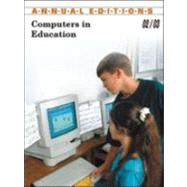| To the Reader | iv | ||||
| Topic Guide | 2 | (2) | |||
| Selected World Wide Web Sites | 4 | (2) | |||
| UNIT 1 Introduction | |||||
|
|||||
|
6 | (2) | |||
|
8 | (3) | |||
|
|||||
|
|||||
|
11 | (2) | |||
|
|||||
|
|||||
|
13 | (4) | |||
|
|||||
|
|||||
|
17 | (6) | |||
|
|||||
|
|||||
|
23 | (4) | |||
|
|||||
|
|||||
|
27 | (7) | |||
|
|||||
|
|||||
| UNIT 2 Curriculum and Instructional Design | |||||
|
|||||
|
32 | (2) | |||
|
34 | (5) | |||
|
|||||
|
|||||
|
|||||
|
39 | (4) | |||
|
|||||
|
|||||
|
43 | (8) | |||
|
|||||
|
|||||
|
51 | (6) | |||
|
|||||
|
|||||
|
57 | (7) | |||
|
|||||
|
|||||
| UNIT 3 Classroom Applications and Software Evaluations | |||||
|
|||||
|
62 | (2) | |||
|
64 | (8) | |||
|
|||||
|
|||||
|
72 | (9) | |||
|
|||||
|
|||||
|
81 | (3) | |||
|
|||||
|
|||||
|
84 | (3) | |||
|
|||||
|
|||||
|
87 | (5) | |||
|
|||||
|
|||||
|
|||||
|
92 | (4) | |||
|
|||||
|
|||||
|
|||||
| UNIT 4 Teacher Training and Resources | |||||
|
|||||
|
94 | (2) | |||
|
96 | (3) | |||
|
|||||
|
|||||
|
|||||
|
99 | (4) | |||
|
|||||
|
|||||
|
|||||
|
103 | (3) | |||
|
|||||
|
|||||
|
106 | (5) | |||
|
|||||
|
|||||
|
111 | (6) | |||
|
|||||
|
|||||
|
|||||
|
117 | (5) | |||
|
|||||
|
|||||
|
|||||
| UNIT 5 Multimedia | |||||
|
|||||
|
120 | (2) | |||
|
122 | (7) | |||
|
|||||
|
|||||
|
129 | (5) | |||
|
|||||
|
|||||
|
134 | (9) | |||
|
|||||
|
|||||
|
|||||
|
143 | (9) | |||
|
|||||
|
|||||
|
|||||
|
152 | (8) | |||
|
|||||
|
|||||
| UNIT 6 Special Issues | |||||
|
|||||
|
158 | (2) | |||
|
160 | (3) | |||
|
|||||
|
|||||
|
163 | (3) | |||
|
|||||
|
|||||
|
166 | (4) | |||
|
|||||
|
|||||
|
170 | (9) | |||
|
|||||
|
|||||
|
|||||
|
179 | (3) | |||
|
|||||
|
|||||
| UNIT 7 The Internet and Computer Networks | |||||
|
|||||
|
180 | (2) | |||
|
182 | (5) | |||
|
|||||
|
|||||
|
187 | (3) | |||
|
|||||
|
|||||
|
190 | (4) | |||
|
|||||
|
|||||
|
194 | (4) | |||
|
|||||
|
|||||
|
198 | (4) | |||
|
|||||
|
|||||
| UNIT 8 Distance Learning | |||||
|
|||||
|
200 | (2) | |||
|
202 | (5) | |||
|
|||||
|
|||||
|
|||||
|
207 | (3) | |||
|
|||||
|
|||||
|
|||||
|
210 | (7) | |||
|
|||||
|
|||||
|
217 | (2) | |||
|
|||||
|
|||||
| Glossary | 219 | (6) | |||
| Index | 225 | (3) | |||
| Test Your Knowledge Form | 228 | (1) | |||
| Article Rating Form | 229 |









